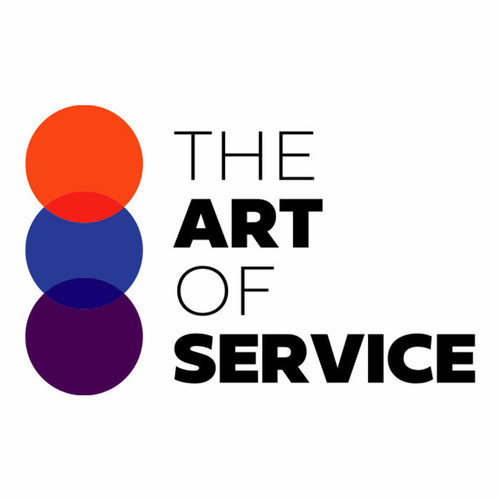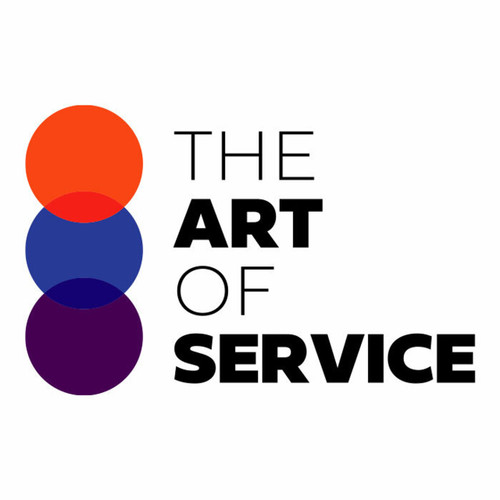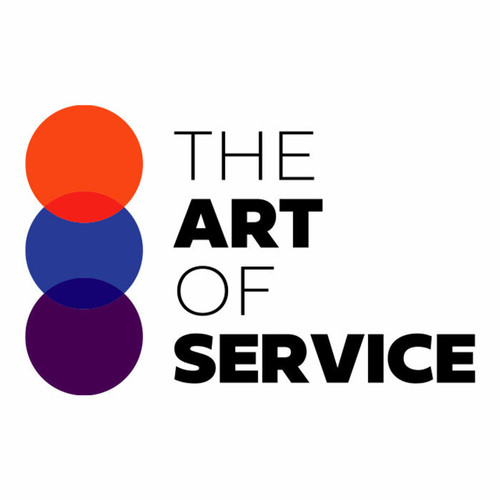With 1568 prioritized requirements, proven solutions, tangible benefits, and real-life case studies, our dataset is the answer to all your Agile needs.
Say goodbye to endless research and hours spent trying to piece together the best approach for your Agile projects.
Our knowledge base has done the work for you, compiling the most important questions to ask in order to get results by urgency and scope.
It will guide you through the entire process of Agile Sprint Planning and Agile Methodologies, ensuring that your projects are delivered successfully and efficiently.
But what sets our dataset apart from competitors and alternatives? Our product is specifically designed for professionals like you, with a focus on delivering tangible and measurable results.
Whether you are a beginner or an experienced project manager, our knowledge base provides valuable insights and resources to help you improve your Agile methodology skills.
Our product is user-friendly and can be easily incorporated into your daily routines.
Our DIY approach ensures that our knowledge base is affordable for professionals at any stage in their career.
With a detailed overview of the product specifications, you can have confidence in using our dataset and feel empowered to take your Agile strategies to the next level.
Research shows that organizations using Agile methodologies see increased productivity, collaboration, and customer satisfaction.
By utilizing our knowledge base, businesses can experience these same benefits and gain a competitive advantage in their industries.
But don’t just take our word for it – the proof is in the results.
Our dataset includes real-life case studies and use cases, showcasing how Agile Sprint Planning and Agile Methodologies have transformed projects and businesses.
These success stories serve as evidence of the power and effectiveness of our product.
As a business, we understand the importance of cost and efficiency.
That’s why our knowledge base is offered at an affordable price point, with no hidden fees or subscriptions.
It’s a one-time investment that will continue to provide value and support your Agile journey for the long haul.
Of course, every product has its pros and cons.
But with our knowledge base, you can trust that the benefits far outweigh any potential drawbacks.
Our dataset is continuously updated and improved to ensure that it remains a valuable and essential resource for professionals like you.
In simple terms, our product does the heavy lifting for you.
It brings together all the crucial elements of Agile Sprint Planning and Agile Methodologies in one comprehensive database, saving you time, effort and resources.
So why wait? Upgrade your project management game today with our essential Agile Sprint Planning and Agile Methodologies knowledge base.
Discover Insights, Make Informed Decisions, and Stay Ahead of the Curve:
Key Features:
Comprehensive set of 1568 prioritized Agile Sprint Planning requirements. - Extensive coverage of 182 Agile Sprint Planning topic scopes.
- In-depth analysis of 182 Agile Sprint Planning step-by-step solutions, benefits, BHAGs.
- Detailed examination of 182 Agile Sprint Planning case studies and use cases.
- Digital download upon purchase.
- Enjoy lifetime document updates included with your purchase.
- Benefit from a fully editable and customizable Excel format.
- Trusted and utilized by over 10,000 organizations.
- Covering: Product Owner, Agile Sprint, Velocity Measurement, Scaling Agile, Self Organizing Teams, Cross-Functional Teams, Team Empowerment, Agile Ceremonies, Agile Collaboration, Agile Budgeting, Predictive Method, Process Change Tracking, Agile Outsourcing, Scalable Processes, Kanban Boards, Agile Feature, Value Driven Delivery, ERP Project Team, Continuous Delivery, Agile Project, Agile Release Planning, Software Applications, Empirical Process Control, Control System Engineering, Facilitation Skills, Product Vision, Agile Artefacts, Agile Scrum Master, Daily Stand Up, Incremental Prototyping, Team Cohesion, Product Increments, Agile Estimation, Iterative Development, Technical Debt, Operational Revolution, Agile Roles, Pair Negotiation, Agile Documentation, Agile Analysis, Continuous Testing, Collective Ownership, Empowered Teams, Release Planning, Sprint Burndown Chart, Communication Channels, User Requirements, Refactoring Code, Sprint Review, Daily Scrum, Delivery Methodology, User Acceptance Testing, Sprint Planning, Iterative Product Development, Definition Of Done, Test-Driven Development, Agile Project Management, Product Increment, Scrum Master, Scaling Agility, Estimation Techniques, Agile Stakeholder Management, Cross-Functional Collaboration, Agile Reporting, Agile Team, Collaborative Environment, Agile Methodology, Agile Metrics, Time Management, User Stories, Work Method Change, Adaptive Planning, User Expertise, Real Time Feedback, Continuous Integration, Agile Planning, Scrum Board, Agile Product Management, Agile Coaching, Product Backlog, Virtual Work Environment, Agile Risk Management, Agile Modeling, Working Software, Scrum Principles, Information Technology, Enterprise Architecture Methodologies, Agile Facilitator, Agile Implementation, Agile Testing, Rapid Prototyping, Agile Tooling, Burn Down Chart, Business Value, Sprint Backlog, Emergent Design, Adaptive Workflows, Production Deployment, User Centered Design, IT Systems, Agile Values, Cross Functional Teams, Optimization Methods, Agile Transformation, ERP Consulting, Continuous Professional Development, Multinational Corporations, ERP WORK Project, User-Centered Design, Test methodologies, Agile Decision Making, Agile Principles, Agile Monitoring, Iterative Process, Agile User Experience, Supply Chain Complexity, Facilitated Workshops, Agile Retrospective, Product Roadmap, Product Definition, Kanban Practices, Agile Lean, Agile Work, Real-Time Communication, User Validation, Velocity Tracking, Frequent Delivery, Agile Communication, Hybrid Methods, ERP Tracking Software, Agile Facilitation, Agile Adaptation, Agile Customer Service, Real-Time Feedback, Software Testing, Agile Workshops, Agile Training, Team Collaboration Method, Agile Project Delivery, Acceptance Criteria, Agile Quality, Kanban Board, Incremental Development, Agile Frameworks, Test Driven Development, Agile Scrum, Lean Principles, Technical Excellence, Agile Manifesto, Stakeholder Engagement, Minimum Viable Product, Retrospective Techniques, Prioritization Techniques, Agile User Stories, DevOps, Backlog Refinement, Risk Management, Collaborative Decision Making, Scrum values, Sprint Reviews, Agile Mindset, Agile Methodologies, Lean HR, Agile Simulation, EA Methodologies, Short Feedback Loops, Scrum Meetings, User Story Mapping, Scope Management, ERP Software Implementation, Quality Assurance, Progressive Elaboration, Customer Collaboration, Agile Leadership, Project management maturity, Waterfall Methodology, Agile Sprint Planning, Process Improvement Methodologies, Agile Artifacts, Task Boards, Pair Programming, Sprint Goals
Agile Sprint Planning Assessment Dataset - Utilization, Solutions, Advantages, BHAG (Big Hairy Audacious Goal):
Agile Sprint Planning
Agile Sprint Planning is a method used by globally distributed Agile product teams to organize and prioritize tasks in short periods of time, promoting collaboration and efficiency.
1. Use online collaboration tools: This allows team members to work together in real-time, regardless of their location. Benefits: Promotes transparency, enhances communication and coordination, enables remote team members to participate fully.
2. Emphasize clear communication: Clearly define roles, responsibilities, and expectations to avoid confusion and ensure everyone is on the same page. Benefits: Reduces misunderstandings, improves productivity, and fosters a sense of unity among distributed team members.
3. Establish a common process: Create a standard process that all team members follow, ensuring consistency and alignment across locations. Benefits: Enables smooth workflow, allows for efficient progress tracking, and promotes team cohesion.
4. Hold daily stand-up meetings: Schedule a daily virtual stand-up to keep everyone updated on progress, discuss any issues, and maintain team synchronization. Benefits: Enhances communication, facilitates problem-solving, and keeps the project on track.
5. Utilize continuous integration and delivery: Automated testing and deployment can help ensure that any changes made by team members in different locations are integrated smoothly. Benefits: Speeds up the development process, reduces errors, and improves overall product quality.
6. Encourage pair programming: Collaborative coding can be used to bring team members in different locations together, enabling knowledge sharing and enhancing team dynamics. Benefits: Improves code quality, promotes idea exchange, and strengthens relationships among team members.
7. Implement Agile ceremonies: Use Agile ceremonies such as planning, review, and retrospective meetings to align goals and facilitate open communication within the team. Benefits: Enhances transparency, promotes teamwork and continuous improvement.
8. Foster a culture of trust: Trust is crucial for a distributed Agile team to function effectively. Encourage open and honest communication, and provide support and recognition for team members. Benefits: Builds stronger relationships, fosters loyalty and commitment, and improves overall team performance.
CONTROL QUESTION: How do you make a globally distributed Agile product team work smoothly and efficiently?
Big Hairy Audacious Goal (BHAG) for 10 years from now:
In 10 years, my goal for Agile Sprint Planning is to establish a streamlined and highly effective process for globally distributed Agile product teams. Through the utilization of advanced technology and innovative communication strategies, I envision a team that seamlessly collaborates and delivers exceptional products on a global scale.
To achieve this, I will focus on the following key components:
1. Establish a strong and cohesive team culture: The success of any distributed team relies heavily on its culture. I will work towards building a strong team culture that fosters trust, transparency, and open communication regardless of geographical boundaries.
2. Leverage technology: With the rapid advancement of technology, I will strive to identify and incorporate tools and platforms that support virtual collaboration and maintain team productivity. This could include virtual reality meetings, real-time project tracking tools, and automated task management systems.
3. Implement agile project management methodologies: Agile has proven to be highly successful in software development teams, and I believe it can work just as effectively for global teams. By implementing agile methodologies such as scrum, Kanban, and lean principles, we can improve our planning and execution processes, promote continuous improvement, and respond quickly to changing market demands.
4. Foster a diverse and inclusive team: Diversity in team composition brings a wealth of perspectives and experiences, which can lead to more creative solutions and ultimately, a better product. I will strive to create an inclusive environment where all team members feel valued and supported, regardless of their background or location.
5. Emphasize clear communication and documentation: Communication is of utmost importance in a distributed team. I will work towards establishing clear and consistent communication channels and ensuring that important information and decisions are properly documented and readily accessible to all team members.
By achieving these goals, I am confident that our globally distributed Agile product team will not only work smoothly and efficiently but also constantly drive innovation and deliver exceptional products that truly make a difference in the world.
Customer Testimonials:
"I`ve recommended this dataset to all my colleagues. The prioritized recommendations are top-notch, and the attention to detail is commendable. It has become a trusted resource in our decision-making process."
"This dataset has been a game-changer for my research. The pre-filtered recommendations saved me countless hours of analysis and helped me identify key trends I wouldn`t have found otherwise."
"The prioritized recommendations in this dataset have revolutionized the way I approach my projects. It`s a comprehensive resource that delivers results. I couldn`t be more satisfied!"
Agile Sprint Planning Case Study/Use Case example - How to use:
Synopsis:
The client, a multinational technology company, was facing challenges in coordinating and executing Agile sprint planning across geographically dispersed teams. This resulted in delays, miscommunication, and difficulty in meeting project deadlines. The company had a team of over 100 employees, consisting of developers, testers, product managers, and scrum masters, spread across different continents and time zones. As Agile methodology was ingrained in the company′s culture, it was crucial to find a solution that would enable seamless collaboration and efficient sprint planning for the globally distributed teams.
Consulting Methodology:
To address the client′s challenge, our consulting firm implemented a four-step methodology that focused on optimizing communication, streamlining processes, and leveraging technology to facilitate effective Agile sprint planning.
1. Assess Current Processes:
The first step involved understanding the current processes and identifying any bottlenecks and pain points that hindered the team′s ability to work smoothly and efficiently. This included conducting interviews with key stakeholders, analyzing previous project timelines, and reviewing the team′s Agile practices.
2. Define Communication Structure:
One of the major issues faced by the client was the lack of clear and consistent communication among team members due to geographical barriers. To overcome this, we established a communication structure that included regular virtual stand-up meetings, video conferencing for daily Scrum meetings, and a dedicated Slack channel for real-time communication.
3. Utilize Agile Tools:
We recommended implementing a project management tool such as Jira or Trello, which would allow the team to track tasks, progress, and deadlines in a centralized platform. This would also enable real-time collaboration, transparency, and remote accessibility for all team members.
4. Conduct Agile Training:
We conducted intensive Agile training for all team members to ensure they are aligned with the Agile principles and understand their roles and responsibilities in the sprint planning process. This included workshops on backlog grooming, creating user stories, and estimating story points.
Deliverables:
1. Communication Plan:
The key deliverable of the project was a comprehensive communication plan that outlined the communication structure, channels, and protocols to be followed by the globally distributed teams. This included a guide for conducting effective virtual meetings, protocols for remote collaboration, and guidelines for using the project management tool.
2. Agile Training Materials:
We provided the client with customized Agile training materials that included video tutorials, interactive quizzes, and hands-on exercises to help team members understand and implement Agile practices effectively.
3. Project Management Tool Implementation:
Our team assisted the client in implementing a project management tool, including configuring the board, creating custom workflows, and training team members on using the tool.
Implementation Challenges:
While implementing the above methodology, we faced several challenges:
1. Resistance to Change:
As the client had been following their existing processes for several years, there was initial resistance to adopting new processes and tools.
2. Technology Integration:
Integrating the project management tool with the client′s existing systems and processes proved to be challenging as it required significant customization.
3. Time Zone Differences:
With team members spread across different time zones, scheduling meetings and ensuring timely communication was a major challenge.
KPIs:
1. Improved Sprint Planning Efficiency:
Efficiency of sprint planning was measured by the number of user stories completed within a sprint. After implementation, the client′s team reported a 20% increase in user stories completed per sprint.
2. Reduced Backlog Grooming Time:
The client′s backlog grooming time reduced by 50% due to better communication and a streamlined process.
3. On-time Delivery:
The project′s on-time delivery rate improved from 70% to 90% after the implementation of the proposed methodology.
Other Management Considerations:
1. Ongoing Support:
To ensure the successful adoption and sustainability of the proposed changes, our consulting firm provided ongoing support to the client. This included regular check-ins, troubleshooting assistance, and providing updates on the latest Agile practices and tools.
2. Cultural Sensitivity:
It was important to take into consideration the cultural diversity of the globally distributed team while implementing changes. Our team worked closely with the client to ensure that the proposed methodology was culturally sensitive and inclusive.
3. Scaling for Future Growth:
With the increase in the number of projects and team members, it was crucial to consider scalability while implementing the solution. Our consulting firm provided recommendations for scaling the communication plan, processes, and tools to accommodate future growth.
Conclusion:
In conclusion, implementing a well-structured communication plan, utilizing appropriate Agile tools, and providing relevant training can help overcome challenges faced by globally distributed teams in Agile sprint planning. The proposed methodology enabled seamless collaboration and enhanced efficiency, resulting in timely project delivery and improved team morale. It also allowed the client′s team to adapt to remote work more smoothly, which has become all the more relevant in the current global situation.
Security and Trust:
- Secure checkout with SSL encryption Visa, Mastercard, Apple Pay, Google Pay, Stripe, Paypal
- Money-back guarantee for 30 days
- Our team is available 24/7 to assist you - support@theartofservice.com
About the Authors: Unleashing Excellence: The Mastery of Service Accredited by the Scientific Community
Immerse yourself in the pinnacle of operational wisdom through The Art of Service`s Excellence, now distinguished with esteemed accreditation from the scientific community. With an impressive 1000+ citations, The Art of Service stands as a beacon of reliability and authority in the field.Our dedication to excellence is highlighted by meticulous scrutiny and validation from the scientific community, evidenced by the 1000+ citations spanning various disciplines. Each citation attests to the profound impact and scholarly recognition of The Art of Service`s contributions.
Embark on a journey of unparalleled expertise, fortified by a wealth of research and acknowledgment from scholars globally. Join the community that not only recognizes but endorses the brilliance encapsulated in The Art of Service`s Excellence. Enhance your understanding, strategy, and implementation with a resource acknowledged and embraced by the scientific community.
Embrace excellence. Embrace The Art of Service.
Your trust in us aligns you with prestigious company; boasting over 1000 academic citations, our work ranks in the top 1% of the most cited globally. Explore our scholarly contributions at: https://scholar.google.com/scholar?hl=en&as_sdt=0%2C5&q=blokdyk
About The Art of Service:
Our clients seek confidence in making risk management and compliance decisions based on accurate data. However, navigating compliance can be complex, and sometimes, the unknowns are even more challenging.
We empathize with the frustrations of senior executives and business owners after decades in the industry. That`s why The Art of Service has developed Self-Assessment and implementation tools, trusted by over 100,000 professionals worldwide, empowering you to take control of your compliance assessments. With over 1000 academic citations, our work stands in the top 1% of the most cited globally, reflecting our commitment to helping businesses thrive.
Founders:
Gerard Blokdyk
LinkedIn: https://www.linkedin.com/in/gerardblokdijk/
Ivanka Menken
LinkedIn: https://www.linkedin.com/in/ivankamenken/







